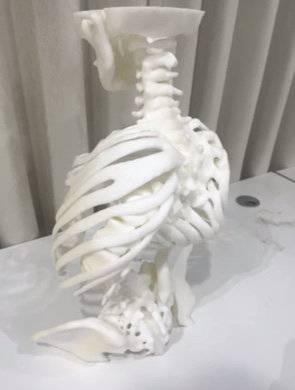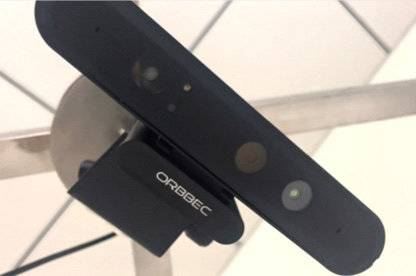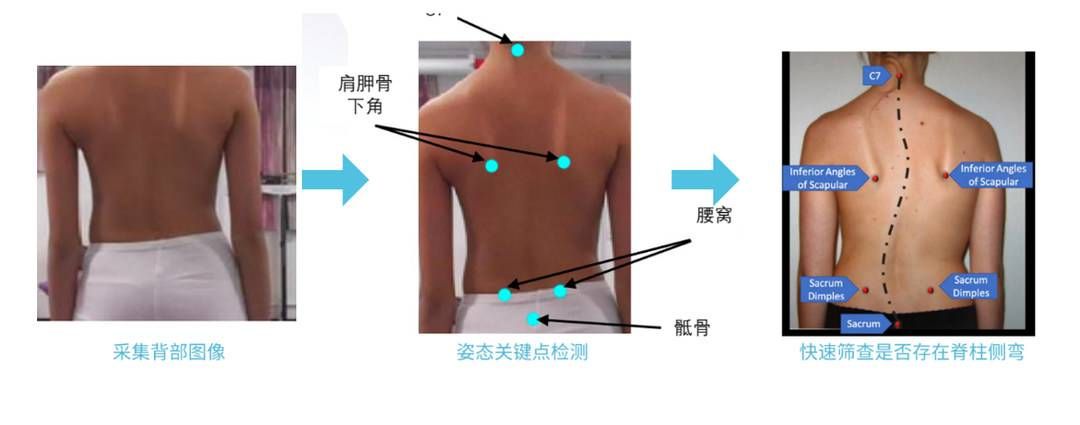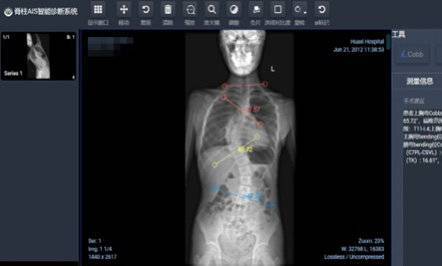The Frontier of Science and Technology | See how AI doctors crack down on "invisible killers" that endanger the health of teenagers
Cover journalist Tan Yuqing Bian Xue
In recent years, scoliosis has become a common disease that harms teenagers, making it difficult for sick teenagers to straighten their backs. According to statistics, the number of scoliosis among primary and secondary school students in China exceeds 5 million, and it is still increasing at a rate of about 300,000 per year. Scoliosis has become the third major disease that harms the health of children and adolescents after obesity and myopia.
Early detection, early diagnosis and early treatment are the key points to combat scoliosis, otherwise it may develop into a very serious deformity, which may affect cardiopulmonary function and even lead to paralysis in severe cases.

Scoliosis model
In the past, doctors would diagnose scoliosis by manual measurement and X-ray screening, but with the integration of artificial intelligence (AI) into medical imaging technology, this step may be further optimized. In the screening stage, it is only necessary to "simply take pictures" to preliminarily determine whether scoliosis occurs, and in the diagnosis stage, the "experienced" AI system can also assist doctors to quickly read films for diagnosis.
Why can taking pictures replace x-rays? How does AI system assist doctors in screening and diagnosing scoliosis? Recently, the cover journalist explored the development of AI+ medical imaging technology.
It only takes a few seconds. Did the AI system tell you about scoliosis?
In the "simulated physical examination room", the reporter saw the hardware part of the spine AIS intelligent screening and diagnosis system (hereinafter referred to as the "system")-a rectangular metal frame about 2 meters high, with a group of small cameras in the center of the top. It looks simple, but the effect is not simple. The reporter’s on-site experience found that it took only a few seconds from detection to obtaining the report results.

The hardware part of the system is the camera.
"As long as the examinee stands in a standard position and poses Adam’s position to expose his back, the system can quickly complete the screening by using an infrared depth camera to collect information on his back." According to Fan Jipeng, the person in charge of the Shuangxin Department of Chengdian Gold Disk, the system will map and transform the image information collected by the camera to get the depth information of multiple posture key points on the back, so as to calculate the back asymmetry index and judge whether the subject may have scoliosis.

Schematic diagram of screening process
He said that this intelligent system will get closer and closer to the level of X-ray diagnosis by constantly learning actual cases and optimizing existing algorithms. While ensuring the accuracy and efficiency of screening, it can also prevent the teenagers being tested from being exposed to X-ray radiation.
This new technology may help to better implement the scoliosis examination project that was included in the physical examination of students in 2022. "We think the greatest significance of the screening system is that it can quickly complete large-scale examinations, so that children with scoliosis who have not yet been discovered will not be delayed."

Interface of scoliosis diagnosis system
In the diagnosis stage, the intelligent system is also a good assistant for doctors. Fan Jipeng explained that in the traditional process, in order to diagnose scoliosis, doctors need to measure the Cobb angle of the spine with a ruler, but this is time-consuming. Different doctors will make some errors when measuring by hand. Doctors with less experience may need to consult for scoliosis with large curvature, and the diagnosis time will be prolonged. However, after deep learning, the artificial intelligence system can accurately read and measure the film within 3~5 seconds, and give diagnosis suggestions.
At present, the system has completed the screening and diagnosis of more than 5,000 cases of scoliosis. "Now we are cooperating with Electronic Science and Technology University Hospital, Zhongshan Pok Oi Hospital and Shenzhen Children’s Scoliosis Center, and this number will be continuously updated."
Training "AI Good Doctor" by "Engraving" Algorithm of Expert Experience
"The accuracy of top doctors’ diagnosis of scoliosis may be 85%~90%, and the overall accuracy of our system will continue to approach this figure." Fan Jipeng said that at present, of course, the accuracy of top experts is higher, but compared with ordinary doctors, the system may have exceeded their basic level.
So, what gives the diagnosis system the ability to catch up with top experts? The answer is the experts themselves.
"When experts mark the angles of thousands of scoliosis cases, the system will learn based on this and solidify the experience of top experts into the algorithm, thus reaching a higher diagnostic level." In Fan Jipeng’s view, although the system is not as good as top experts, it is used to assist ordinary doctors in diagnosis or help improve their medical level.
The marked samples provided by human experts are the "success stories" of artificial intelligence doctors, but Fan Jipeng said that this is also one of the difficulties in the development of AI doctors. Different races, even people in different regions, will have certain differences. If the diagnosis is accurate enough, researchers need to collect as many samples as possible for AI to learn.
At present, the real large-scale landing of the system still faces some difficulties in the process. "How to make the medical examiners go through the inspection process quickly and how to ensure that their Adam posture is standard requires some corresponding training."
Therefore, the system will learn more practical cases, further optimize its algorithm program, continuously improve the diagnostic accuracy, and design detailed operating standards for the system, "for example, what is the standard Adam position, how to do it well, etc."